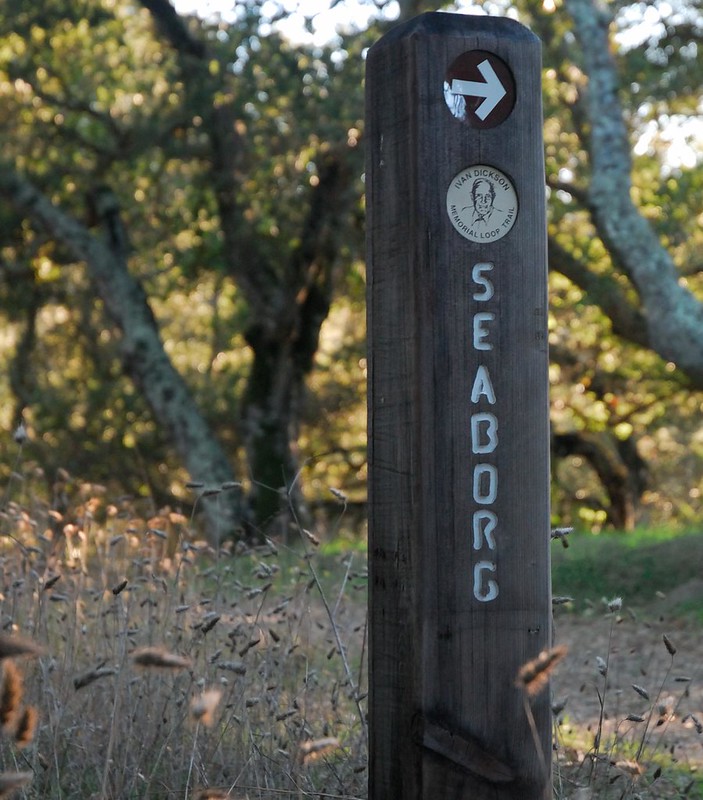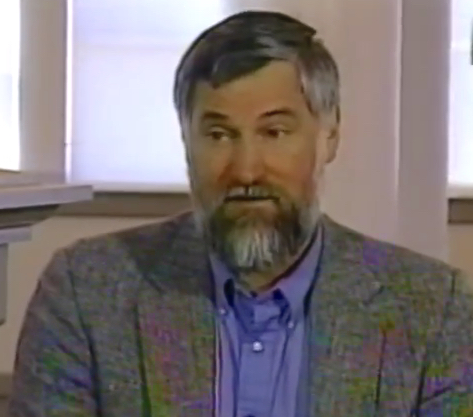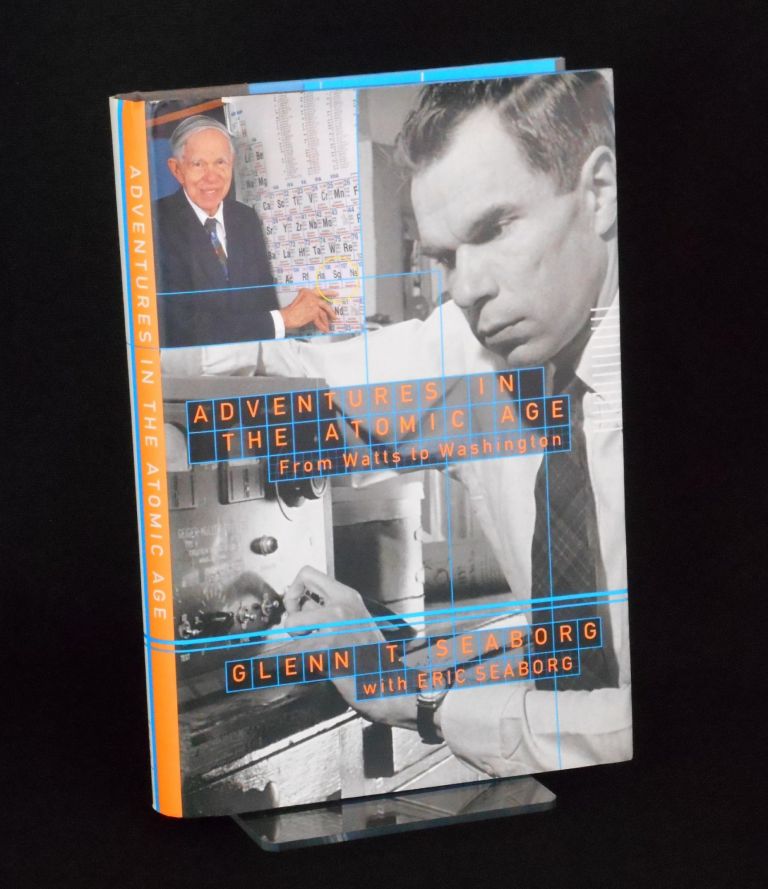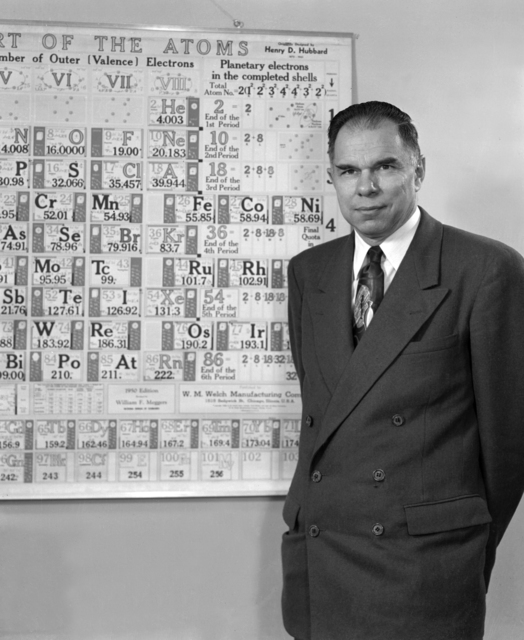Eric Seaborg, a writer and author, outdoorsman and environmentalist, has a love for hiking that he shared with his father, the late chemist and Nobel laureate Glenn Seaborg (1912-1999) who blazed trails in element and isotope discoveries during an illustrious career at the Department of Energy’s Lawrence Berkeley National Laboratory (Berkeley Lab) and UC Berkeley.
In this Q&A, Eric Seaborg shares memories of his father and relates his experiences as a writer and as president of the American Discovery Trail Society, which has established a hiking trail spanning the U.S. – from Point Reyes National Seashore in California to Cape Henlopen State Park in Delaware.
Eric is one of seven children born to Helen and Glenn Seaborg.
Q: You helped to write your father’s autobiography, “Adventures in the Atomic Age: From Watts to Washington.” What else is in your writing background?
A: I just was pretty good at English when I was growing up, so I focused on writing. I do mostly scientific and technical writing. I’ve done all sorts of stuff. I’ve done outdoor writing. I got hired to scout the route for the American Discovery trail across the United States, and my wife and I wrote a book about that called “American Discoveries.”
In the 1980s I applied for a job at the American Association for Clinical Chemistry in Washington, D.C., and I got it. I found that science writing worked well for me.
Before that I had worked at a magazine called The Futurist. I was one of the editors. They were on the edge of general interest – they were trying to take what these futurist people wrote and make it into general interest stuff.
The American Chemical Society did a thing a while ago where they wrote a little bit about every element, and I wrote something for that about the naming of seaborgium.
I’m doing some medical writing now that is keeping me tied up from doing bigger projects.
Q: Your father was known as an excellent science communicator. What were some of the ideals he held about science that come to mind?
A: He was a big supporter of education. He was an educator all his life and just wanted to see more science taught in schools and to have it more widely known and recognized.
He was always fighting to get people to not be afraid of science, to not be afraid of change, and to keep an open mind about things.
He always said that science itself is neutral. The knowledge you find is neutral and it just exists. The use you put it to is up to the people.
It’s like splitting the atom can be used to make nuclear power or it can be used to make nuclear bombs, and it’s up to the people in making the right choices in what you do there. You may be afraid of this stuff, but if there’s knowledge to be found out there and experiments to be done, they’re going to happen. So he was the same way in saying, “Don’t think you can stop it.”
So don’t stick your head in the sand, but you should be knowledgeable about it. You should educate yourself about science and you should get involved in trying to make the right choices.
Q: What other words of wisdom from your father do you recall that still hold value for you?
A: I don’t necessarily do it, but one of the things he would say was, “When you’ve got your list of things to do for the day, do the hardest one first and then that’ll be out of the way. And you know it’s downhill from there.”
And also, about not procrastinating because it’s not going to be any easier tomorrow than it is today.
Q: Besides seaborgium, which was named for him, what would you say was your father’s favorite element and isotope? (An isotope is a variety of an element that has more or fewer uncharged particles called neutrons packed into their nuclei than the standard number for that element.)
A: I’m not sure he would say plutonium, because it’s so controversial. The one that may have had the most impact on him was americium, because that’s the one that they discovered during World War II, and it’s the one that they discovered because they knew what to look for.
They knew what to look for because he was introducing the actinide series concept to the periodic table that would come below the lanthanide series, and that was his big contribution in basically rewriting or revising the periodic table and putting that row down there. So that may have been one of his most important contributions.
His favorite isotope may have been iodine-131, and the story on that was that there was a doctor who wanted a better isotope for doing testing in people. He wanted something that you could trace better.
He ran into my father and said he wanted this better iodine isotope. And he said, “Do you know what would be good? A (radioactive) half-life of about a week.” And so my father and his colleagues went right in and they found this iodine-131 which has a half life of about a week, and it’s been a workhorse of nuclear medicine.
One of the reasons that I say it might be one of his favorites is because they actually used it to treat his mother, who had a thyroid disease. The treatments extended her life.
Q: Your father and you have shared a love of hiking. Where has this journey taken you?
A: My father was big into hiking. And back in the 1970s I noticed that this American Hiking Society was being formed, so I gave him a membership to that.
Then, he happened to be in D.C. when they were holding one of their first annual meetings, and they were talking about holding an event where people would hike across the country. They were going to have it start in Los Angeles and end up in D.C.
My father piped up and said, “Well, if you have it start in San Francisco, I’ll plan the route through California.” He and my mother spent probably every available weekend for about a year figuring out a route that this HikaNation thing could follow through California.
This was held in 1980, and he laid it out. There were about three dozen people who hiked all the way across the country. There were a lot of people who joined it along the way. For the grand opening of the hike, it started in San Francisco – and for the first time ever they actually closed a lane of the Bay Bridge and let people hike across it. And there were about 5,000 to 10,000 people who showed up for this hike across the Bay Bridge.
The event was called HikaNation in 1980-81, and for a long time, people used it as an inspiration for a coast-to-coast trail, and that’s kind of what the American Discovery Trail was born out of. That trail actually follows most of the HikaNation route through California that my father laid out.

Seaborg Trail marker, San Francisco Bay Area. (Credit: Janine/Flickr)
It’s now complete in the sense that somebody can start on one coast and walk to the other and follow the route that we’ve got. We have turn-by-turn directions that give you every turn you need to do along the way.
It still involves much more walking on roads than we would like it to. And if you’re actually trying to hike through, it’s underdeveloped in terms of camping opportunities along the way. You have to be creative in finding places to sleep at night. Eight to nine months is the fastest someone has completed it. There’s a guy who is doing it in three consecutive years, in pieces. Some people have hiked some parts and then they’ll get on a bike for other parts.
There’s a couple of pieces of legislation and it’s actually been recommended by the National Park Service for inclusion in the national trail system. And it would introduce a new kind of trail called a National Discovery Trail.
There’s one piece of legislation that basically tells land managers to give us the opportunity to make this trail across federal lands.
# # #
Founded in 1931 on the belief that the biggest scientific challenges are best addressed by teams, Lawrence Berkeley National Laboratory and its scientists have been recognized with 13 Nobel Prizes. Today, Berkeley Lab researchers develop sustainable energy and environmental solutions, create useful new materials, advance the frontiers of computing, and probe the mysteries of life, matter, and the universe. Scientists from around the world rely on the Lab’s facilities for their own discovery science. Berkeley Lab is a multiprogram national laboratory, managed by the University of California for the U.S. Department of Energy’s Office of Science.
DOE’s Office of Science is the single largest supporter of basic research in the physical sciences in the United States, and is working to address some of the most pressing challenges of our time. For more information, please visit energy.gov/science.


